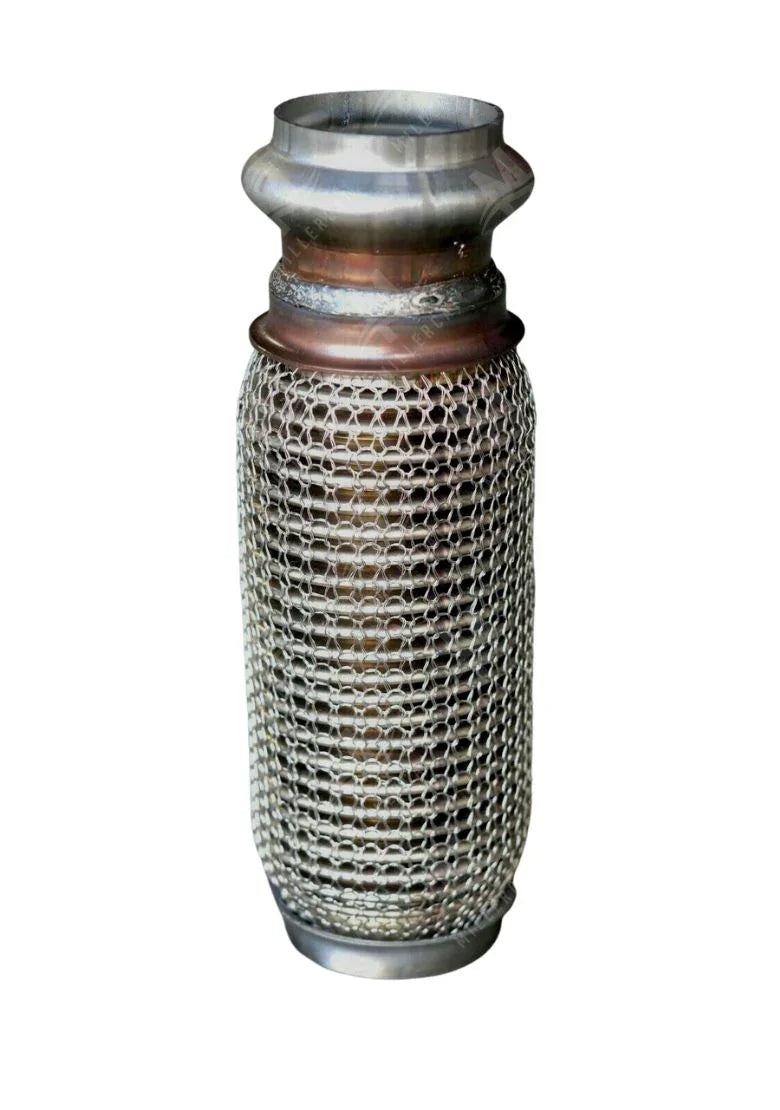
Shop Converters
SHOP BY CATEGORY

THE MILLER CAT ADVANTAGE
We manufacture 100% CARB Compliant catalytic converters and exhaust products.
FAQs
A catalytic converter is a mechanical device designed to convert the three most harmful elements present in a car’s exhaust into harmless elements. The three harmful elements are Hydrocarbons (unburned gasoline), Carbon Monoxide (accumulated by gasoline combustion), and Nitrogen Oxides (formed when the nitrogen in the air is forced to combine with oxygen by the heat in the engine). A catalytic converter aids in converting carbon monoxide into carbon dioxide. It also helps in converting the hydrocarbons into water (H2O) and carbon dioxide. The nitrogen oxides are converted back into oxygen and nitrogen. A catalytic converter has no moving parts and is designed to last the normal operating life of the vehicle.
Most catalytic converters fail due to engine-related problems. Replacing the catalytic converter without diagnosing and repairing the cause of the failure may lead to another ruined converter. Typically, converter failures fall in one of the following categories: physical damage due to corrosion or from the converter coming into contact with a large object on the road surface.
Potential Causes:
- Overheated, melted, or broken converters
- Misfires – Low compression, low spark, or no spark
- Engine mechanical, ignition, or control system failure
- Coated/Oil-Fouled Substrate
- Excessive oil consumption (burning oil): bad rings or valve seals
- Excessive carbon build-up in exhaust: Incorrect timing of fuel mixture, faulty spark plugs or plug wires, faulty check valve, oxygen sensors
- Internal coolant leaks (head/intake gasket)
- Improper fuels or additives: E85, diesel, sulfur (found in some low quality gasoline)
- Structural damage
- Physical damage such as dents or cracks from road debris, collision, speed bumps, etc.
- Metal fatigue or stress fractures
- Corrosion
- Contamination due to excessive oil consumption, internal coolant leak, or excessive carbon build up
- Melted substrate due to engine misfires which lead to excessive converter temperatures
- Thermal Shock or Cold-quenching: hot converter is suddenly cold quenched when driving through deep water or into deep snow
- Sudden drop in temperature forces the converter housing to contract, which can cause cracks or breakage of the ceramic substrate.
- Converter aging/lack of engine maintenance – cycles of damaging engine conditions will eventually deteriorate converter performance
Converters will get red hot when excess fuel is introduced directly into it, along with sufficient oxygen to burn the fuel. This is not a problem with the converter itself, but the result of a problem with the fuel system or ignition that allows unburned fuel to pass through the engine and then travel down into the converter. If the root cause is not corrected, the new converter will melt as well. Common causes of a melted converter are: 1) A three-way plus air vehicle running rich, and when the air is injected into the converter, the rear brick will melt as the excessive fuel now has enough oxygen to burn inside the converter, 2) Vehicle is running rich with an exhaust leak, and when the air is drawn into the exhaust pipe and is combined with the excess fuel, it will burn in the converter, 3) The vehicle has a misfire. When the air-fuel charge leaves the combustion chamber without firing, it will travel through the exhaust pipe and burn in the converter.





